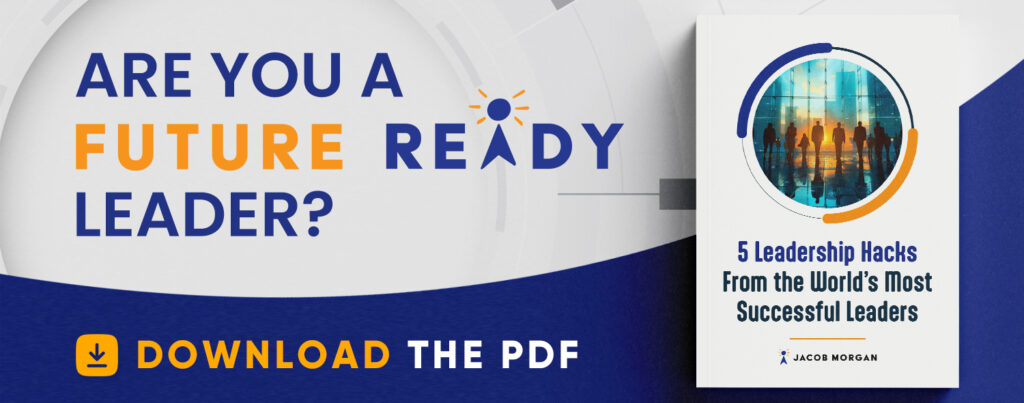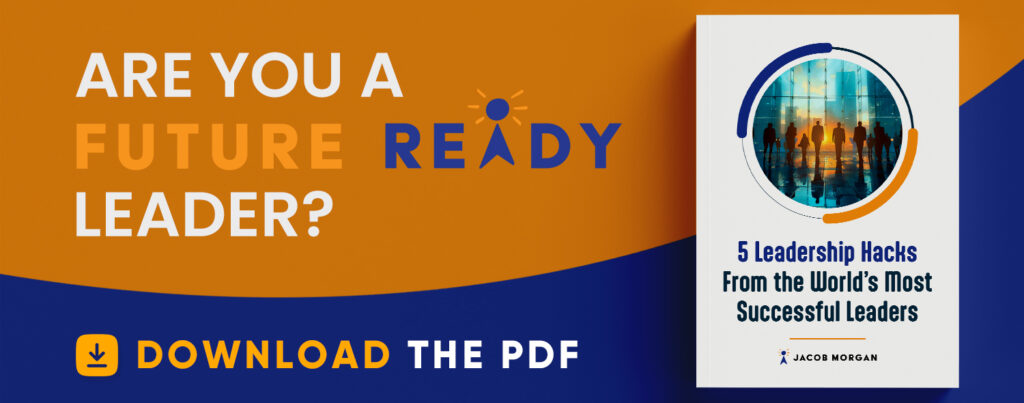Join 40,000 other subscribers who get Great Leadership delivered directly to their inbox each week. You’ll get access to my best thinking and latest content. Sign up today.
…
If you’re a Chief Human Resources or Chief People Officer, then you can request to join a brand new community I put together called Future Of Work Leaders which focuses on the future of work and employee experience. Join leaders from Tractor Supply, Johnson & Johnson, Lego, Dow, Northrop Grumman and many others. We come together virtually each month and once a year in-person to tackle big themes that go beyond traditional HR.
Every business leader today faces the same problem: change is relentless, and staying ahead feels almost impossible. But according to Seth Godin, it’s not about keeping up—it’s about leading with a clear strategy that doesn’t just react to disruptions but anticipates them. In our recent discussion, Seth, a bestselling author and entrepreneur, explains how leaders often get strategy wrong by mistaking it for a short-term plan when, in reality, it’s a guiding philosophy for long-term success. With shifts like AI and climate change reshaping industries, Seth reveals how leaders can create foresight, embrace disruption, and strategize for a future that’s already knocking at the door.
The line between strategy and tactics is often blurred, and many leaders find themselves focusing on the wrong thing. According to Seth, strategy is a broader framework—it’s about your long-term vision and how you plan to achieve it, while tactics are the specific actions you take to get there. Leaders who fail to recognize this distinction often get bogged down in short-term thinking, losing sight of where they’re really heading. In this conversation, Seth offers insights into how companies can stop mistaking tactics for strategy and instead focus on the bigger picture.
Listen to the episode here on Apple Podcast & leave a review!
Strategy Is Not a Checklist
Seth’s key point is that strategy is not a to-do list. It’s easy to mistake a collection of tasks for a strategy, but as Seth notes, tactics will only take you so far. A successful strategy is a philosophy—a way of thinking that shapes your company’s long-term direction. It’s about understanding where you want to go and making decisions that align with that vision, not just solving today’s problems. As Seth explains, companies like Netflix didn’t stay ahead by constantly reacting to every change—they succeeded because they had a clear strategy of self-disruption and foresight.
This distinction between strategy and tactics becomes even more critical as businesses face inevitable shifts, from the rise of artificial intelligence to the generational transition of Baby Boomers leaving the workforce. Instead of panicking about how to react to these changes, Seth encourages leaders to develop a long-term approach that factors in these inevitable transformations. By adopting a forward-thinking strategy, leaders can focus on sustainable growth instead of chasing every fleeting trend.
Listen to the episode here on Apple Podcast & leave a review!
Embracing Disruption and Self-Disruption
One of the standout examples in the episode is how Netflix disrupted itself to stay ahead. While most companies wait until it’s too late to innovate, Netflix proactively shifted from a DVD rental service to streaming long before it became the norm. According to Seth, this is a powerful lesson in foresight. Great leaders aren’t afraid to disrupt their own businesses to stay ahead of the competition. Instead of seeing disruption as a threat, they embrace it as part of their strategy.
Seth emphasizes that leaders should be constantly scanning the horizon for upcoming challenges and asking themselves, “How can we be the disruptor rather than the disrupted?” Companies that succeed in the long term are those that lean into change and are willing to take risks. A strong strategy will incorporate the possibility of disruption—not as a problem to solve but as a natural part of growth.
…
Leadership is evolving rapidly—are you keeping up? Each year, I engage with and analyze the insights of leading executives from companies like Microsoft, IBM, and Virgin Group, uncovering the strategies that drive their success. This exclusive PDF distills the top five leadership hacks used by these world-renowned leaders. Discover what sets these leaders apart and how you can apply their breakthrough tactics to elevate your leadership in 2024 and beyond.
Adaptability as a Strategic Strength
Seth also points out that adaptability is a crucial component of any successful strategy. With major shifts like AI reshaping industries, companies that are rigid in their approaches risk becoming obsolete. Leaders need to develop the ability to pivot when necessary, all while staying true to their overarching vision. Adaptability doesn’t mean changing your strategy on a whim, but it does mean being flexible enough to evolve your tactics as new information becomes available.
According to Seth, leaders who cling to old ways of doing things—who resist these inevitable changes—are setting their companies up for failure. Instead, he encourages businesses to embrace uncertainty, develop resilience, and stay open to new ideas. The ability to adapt isn’t just about survival—it’s about creating a competitive advantage in a world where change happens faster than ever.
Listen to the episode here on Apple Podcast & leave a review!
Practical Tips for Leading Through Change
Seth offers several actionable strategies for leaders who want to stay relevant in an evolving landscape:
-
Differentiate between strategy and tactics: Always keep the bigger picture in mind. Your strategy is your long-term vision, while tactics are the steps you take to achieve it. Don’t confuse the two, or you’ll lose sight of your end goal.
-
Be willing to disrupt your own business: Take inspiration from companies like Netflix. Self-disruption allows you to stay ahead of the competition and adapt to changes in the market.
-
Focus on foresight, not just reaction: Instead of waiting for change to happen, anticipate it. Look at emerging trends, such as AI or generational shifts, and build them into your strategy.
-
Adapt, but don’t lose your core values: Flexibility is key, but that doesn’t mean abandoning your vision. Adapt your tactics while staying true to your long-term strategy.
-
Embrace uncertainty: The business world is unpredictable, but those who learn to see uncertainty as an opportunity will thrive. Build resilience into your strategy so you can evolve when the landscape shifts.
Why These Strategies Matter
Seth’s insights are more than just leadership advice—they’re a blueprint for navigating a world where change is constant and disruption is inevitable. The businesses that thrive in this new environment will be those that can differentiate between short-term tactics and long-term strategies, and those that are willing to disrupt themselves before the competition does. By developing foresight and embracing adaptability, leaders can build organizations that are resilient and ready to face whatever comes next.
If you want to dive deeper into these strategies and hear more of Seth Godin’s unique insights, make sure to listen to the full podcast episode. His approach to leadership and strategy is essential for anyone looking to not only survive but thrive in a rapidly changing world.
Listen to the episode here on Apple Podcast & leave a review!
…
Leadership is evolving rapidly—are you keeping up? Each year, I engage with and analyze the insights of leading executives from companies like Microsoft, IBM, and Virgin Group, uncovering the strategies that drive their success. This exclusive PDF distills the top five leadership hacks used by these world-renowned leaders. Discover what sets these leaders apart and how you can apply their breakthrough tactics to elevate your leadership in 2024 and beyond.



